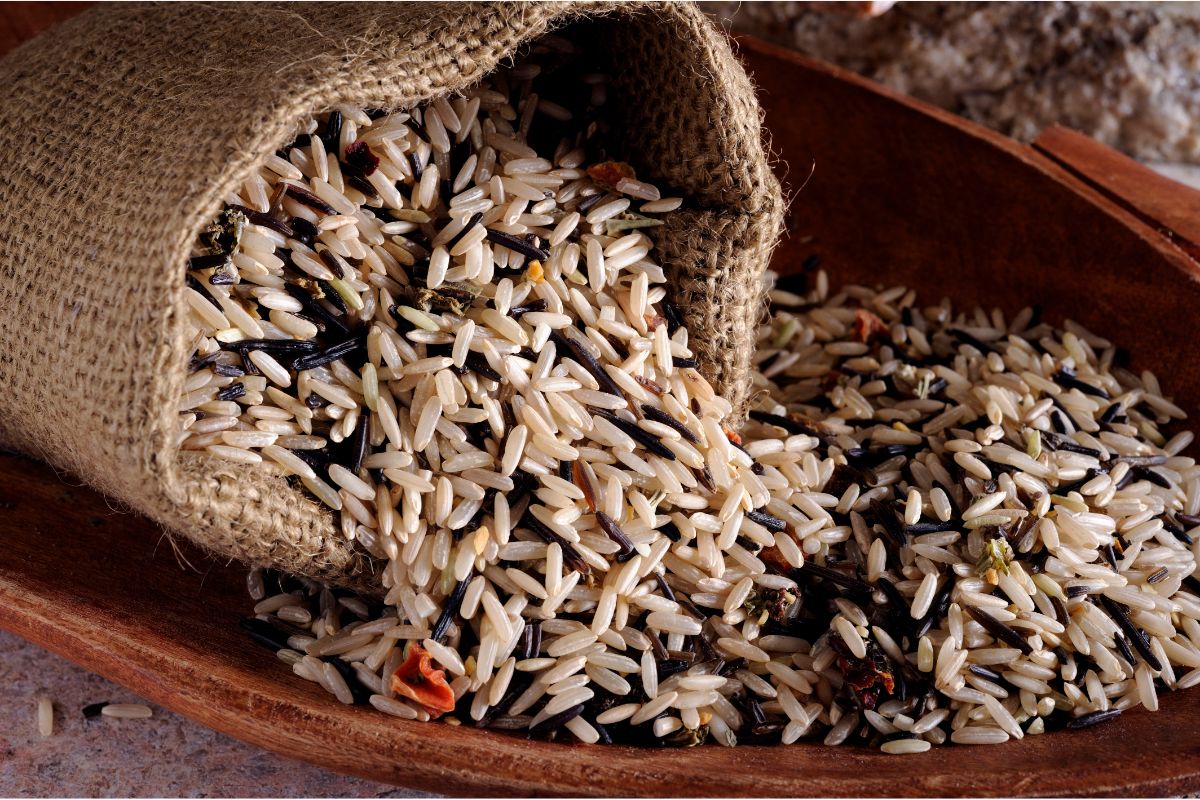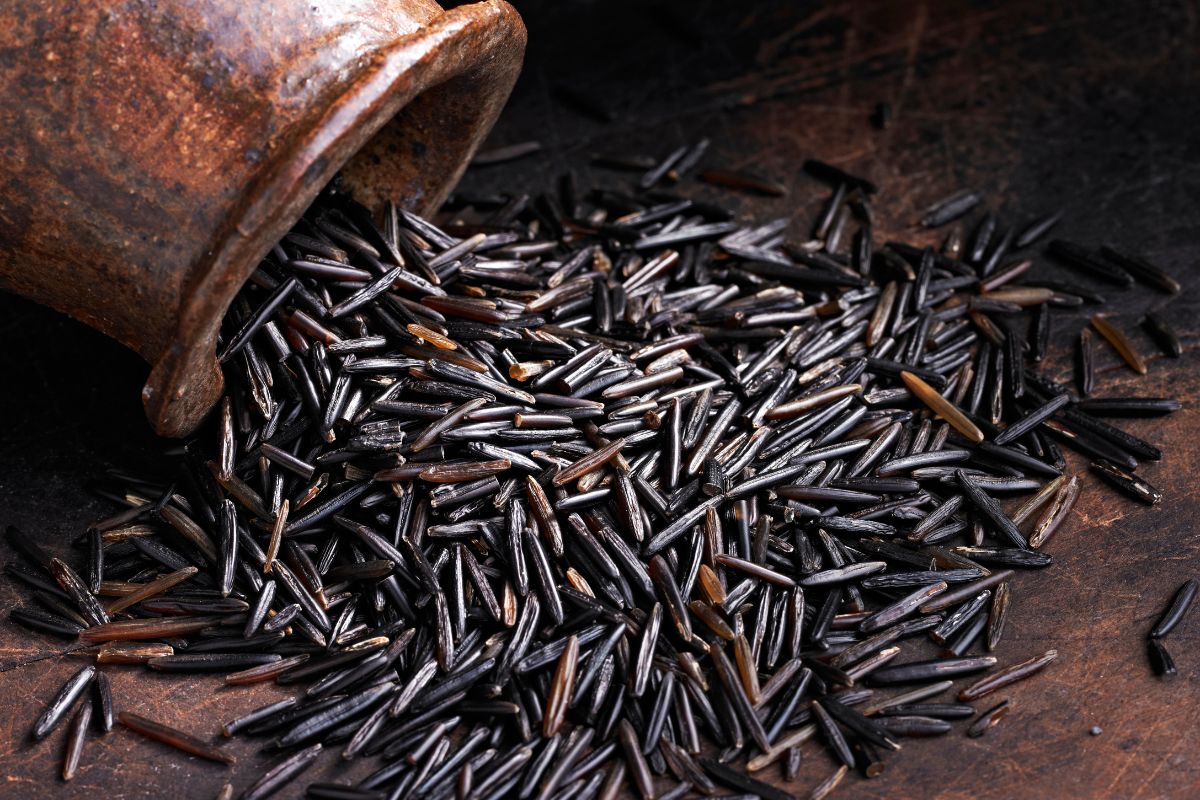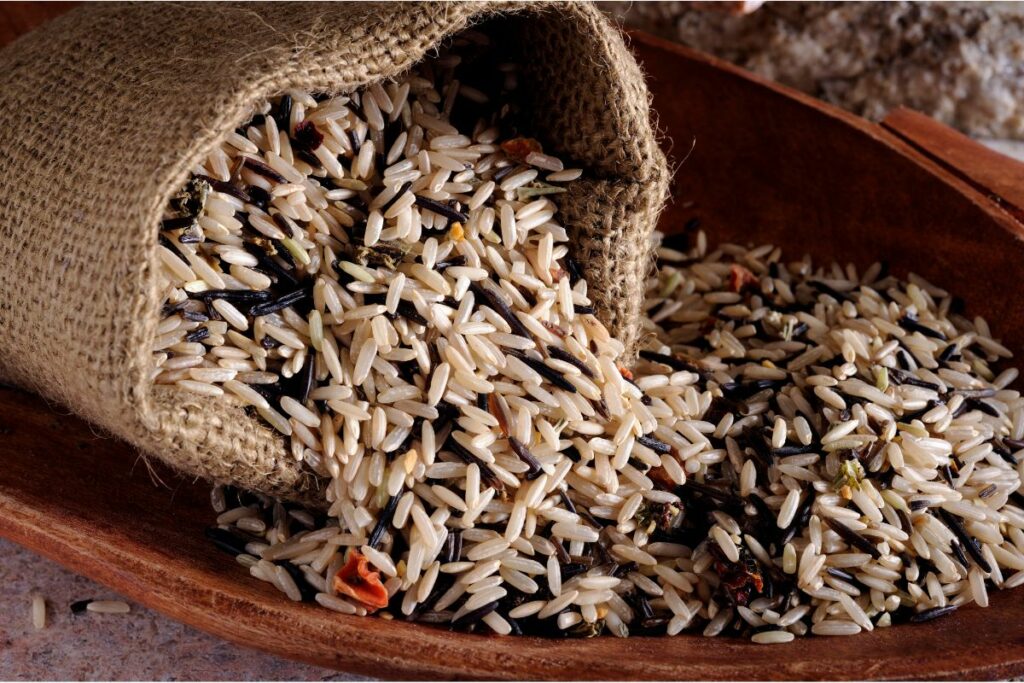Wild rice is growing in popularity and is popping up more and more in recipes and on restaurant menus. But what is wild rice?
Why is it so popular? Is it good for you?

If you want to know more about wild rice then you are in the right place. We have put together this guide to tell you everything you need to know about wild rice, so keep reading to find out more.
What Is Wild Rice?
Wild rice is not actual rice. It comes from an aquatic grass which makes it similar to rice, but it is a nutritious form of whole grain which is classed as a seed.
The aquatic grass that wild rice comes from grows in shallow marshes, and along the shorelines of rivers, lakes and streams. It only grows in freshwater, not saltwater.
There are four species of wild rice – three that originate from North American and one that is native to Asia. The Asian variety is harvested as a vegetable whereas the other three are harvested as grain.
In North America, wild rice grows in abundance in the Great Lakes areas. Native Americans have used it as an important food source for hundreds of years.
Wild rice is referred to as a type of rice because the cooking process is similar and it looks like rice. However, it has a much stronger flavor and it is more expensive, as it is harder to grow.
What Is The Nutritional Value Of Wild Rice?
How does wild rice compare to other types of rice when it comes to the nutritional breakdown?
Every 100g of cooked wild rice contains:
- 101 calories
- 21g carbohydrates
- 4g protein
- 2g fiber
It also contains a certain percentage of your recommended daily amount of certain nutrients:
- 7% Vitamin B6
- 6% folate
- 8% Magnesium
- 8% phosphorus
- 9% zinc
- 6% copper
- 14% manganese
Let’s compare that to 100g of boiled white rice:
- 130 calories
- 28g carbohydrates
- 2.7g protein
- 0.3g fiber
- 6.7% iron
- 0.8% calcium
- 1% potassium
And finally, 100g of cooked boiled brown rice:
- 112 calories
- 24g carbohydrates
- 2.3g protein
- 1.8g fiber
- 2.9% iron
- 0.8% calcium
- 2% potassium
Wild rice is a more nutrient dense food than white rice or brown rice, as it contains more nutrients and fewer calories per 100g.
It is much higher in protein and contains all of the 9 amino acids that your body needs, which makes it a great source of protein for vegetarians and vegans.
It also contains more fiber which makes it a great carbohydrate to eat for a healthy gut.

Wild rice is also very high in antioxidants. It contains around 30 times more antioxidants than white rice. Antioxidants are great for cardiovascular health and help to prevent diseases like heart disease, cancer and Alzeihmers.
Wild rice has a low glycemic index which makes it a great choice of carbohydrates for people with diabetes.
The glycemic index is how quickly food is converted into sugar, and foods with a high glycemic index can cause spikes in your blood sugar.
Wild rice has a similar glycemic index to oats. Eating wild rice can also reduce your risk of developing diabetes. It can help to reduce insulin resistance and improve blood sugar control.
Are There Any Downsides To Eating Wild Rice?
Wild rice is safe to eat, but you need to make sure that you get it from a trusted source. If you come across wild rice growing, do not harvest it yourself. You need to make sure that it is not contaminated with fungus.
Some wild rice is infected with a fungus called ergot. This fungus is toxic and can cause some very unpleasant side effects when ingested.
This can include dizziness, headaches, nausea, diarrhea, and even long term mental problems. You can spot infected grains of wild rice by the fungus that is growing on them.
It tends to have a pink or purple color. However, it is safest to stick with store bought wild rice.
Just like normal rice, the growing method of wild rice can sometimes lead to high levels of heavy metals in the grain. For example, lead, cadmium and arsenic can be found in certain types of rice.
White rice is heavily processed and most of the traces of metal are removed, but wild rice is a whole grain that does not go through the same processes.
If these heavy metals build up in your system it can cause health issues, but this would only happen if you were eating an excessive amount of wild rice.
If you are buying your wild rice from a store then you should not have any issues with contamination and it will be safe to eat.
What Does Wild Rice Taste Like?
Whilst wild rice looks a lot like normal rice, it doesn’t taste the same. It has a much chewier texture, and a more earthy flavor. Some people describe it as having a nutty flavor.
There are different ways to eat wild rice. Some people mix it in with normal rice to provide a variety of texture and flavor, and to add more nutrients to their meal.
Other people use it instead of potatoes or pasta as it is considered to be a healthier choice. It goes really well with wholesome salads, and you can also add it to soup or casseroles.
It takes quite a long time to cook wild rice – around 45 to 60 minutes – compared to white rice which is done within 20 minutes.
You can buy it pre-cooked and packaged from the store, often in convenient microwave pouches, but this is more expensive.
Before you cook wild rice, make sure you rinse it thoroughly in cold water. Boil it in a saucepan with 3 cups of water for every one cup of rice.
You can also add a little bit of salt to the water to help bring out the flavors. Bring the water to the boil then simmer the rice for around 40 to 60 minutes until all of the water has been absorbed by the grains.
The grains will crack open and curl when they are fully cooked. Make sure you fluff the wild rice with a fork to separate the grains before serving.
Summary
Wild rice is a great alternative to normal rice as it is more dense in nutrients and has a deeper flavor. Try adding it to your diet and see if you notice the health benefits.








